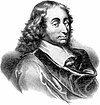Portal:Catholic Church
Introduction The Catholic Church, also known as the Roman Catholic Church, is the largest Christian church, with 1.39 billion baptized Catholics worldwide as of 2022. It is among the world's oldest and largest international institutions, and has played a prominent role in the history and development of Western civilization. The church consists of 24 sui iuris churches, including the Latin Church and 23 Eastern Catholic Churches, which comprise almost 3,500 dioceses and eparchies located around the world. The pope, who is the bishop of Rome, is the chief pastor of the church. The Diocese of Rome, known as the Holy See, is the central governing authority of the church. The administrative body of the Holy See, the Roman Curia, has its principal offices in Vatican City, a small independent city-state and enclave within the Italian capital city of Rome, of which the pope is head of state. The core beliefs of Catholicism are found in the Nicene Creed. The Catholic Church teaches that it is the one, holy, catholic and apostolic church founded by Jesus Christ in his Great Commission, that its bishops are the successors of Christ's apostles, and that the pope is the successor to Saint Peter, upon whom primacy was conferred by Jesus Christ. It maintains that it practises the original Christian faith taught by the apostles, preserving the faith infallibly through scripture and sacred tradition as authentically interpreted through the magisterium of the church. The Roman Rite and others of the Latin Church, the Eastern Catholic liturgies, and institutes such as mendicant orders, enclosed monastic orders and third orders reflect a variety of theological and spiritual emphases in the church. Of its seven sacraments, the Eucharist is the principal one, celebrated liturgically in the Mass. The church teaches that through consecration by a priest, the sacrificial bread and wine become the body and blood of Christ. The Virgin Mary is venerated as the Perpetual Virgin, Mother of God, and Queen of Heaven; she is honoured in dogmas and devotions. Catholic social teaching emphasizes voluntary support for the sick, the poor, and the afflicted through the corporal and spiritual works of mercy. The Catholic Church operates tens of thousands of Catholic schools, universities and colleges, hospitals, and orphanages around the world, and is the largest non-government provider of education and health care in the world. Among its other social services are numerous charitable and humanitarian organizations. (Full article...) Selected article
 Our Lady of Guadalupe (Spanish: Nuestra Señora de Guadalupe, Nahuatl: Nicān Mopōhua), also called the Virgin of Guadalupe (Spanish: Virgen de Guadalupe) is a 16th century Roman Catholic icon depicting an apparition of the Virgin Mary. It is Mexico's most beloved religious and cultural image. Our Lady of Guadalupe is known in Mexico as "La Virgen Morena", which means "The brown-skinned Virgin". Our Lady of Guadalupe's feast day is celebrated on December 12, commemorating the account of her appearances to Saint Juan Diego on the hill of Tepeyac near Mexico City from December 9 through December 12, 1531.The Virgin of Guadalupe is a cultural symbol of significant importance to the Mexican identity.The Basilica of Our Lady of Guadalupe in Mexico City is the second most visited Roman catholic shrine on the world after the Basilica of Saint Peter in the Vatican.The image of Our Lady of Guadalupe is often read as a coded image. Miguel Sanchez, the author of the 1648 tract Imagen de la Virgen María, described the Virgin's image as the Woman of the Apocalypse from the New Testament's Revelation 12:1: "arrayed with the sun, and the moon under her feet, and upon her head a crown of twelve stars."
Selected image
 Credit: Afernand74 Intercession of Charles Borromeo supported by the Virgin Mary (1714), ceiling fresco by Johann Michael Rottmayr (1654-1730) in the Karlskirche, Vienna. The son of Giberto II Borromeo, conte (count) of Arona, and Margherita de' Medici, Carlo Borromeo was born at the castle of Arona on Lago Maggiore. The aristocratic Borromeo family's coat of arms included the Borromean rings, sometimes taken to symbolize the Holy Trinity. Selected biography
 Blaise Pascal (French pronunciation: [blɛz paskal]), (June 19, 1623 – August 19, 1662) was a French mathematician, physicist, and religious philosopher. He was a child prodigy who was educated by his father. Pascal's earliest work was in the natural and applied sciences where he made important contributions to the construction of mechanical calculators, the study of fluids, and clarified the concepts of pressure and vacuum by generalizing the work of Evangelista Torricelli. Pascal also wrote in defense of the scientific method. Pascal was a mathematician of the first order. He helped create two major new areas of research. He wrote a significant treatise on the subject of projective geometry at the age of sixteen, and later corresponded with Pierre de Fermat on probability theory, strongly influencing the development of modern economics and social science. Following a mystical experience in late 1654, he abandoned his scientific work and devoted himself to philosophy and theology. His two most famous works date from this period: the Lettres provinciales and the Pensées. Pascal suffered from ill health throughout his life and died two months after his 39th birthday.
Did you know...

Related portalsFeast Day of June 2
Selected quote

News
SubcategoriesTopics
The Holy Bible:
Particular Churches (grouped by liturgical rite):
Things you can do
External resourcesWikiProjectsAssociated WikimediaThe following Wikimedia Foundation sister projects provide more on this subject:
Discover Wikipedia using portals |

































